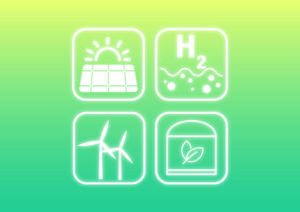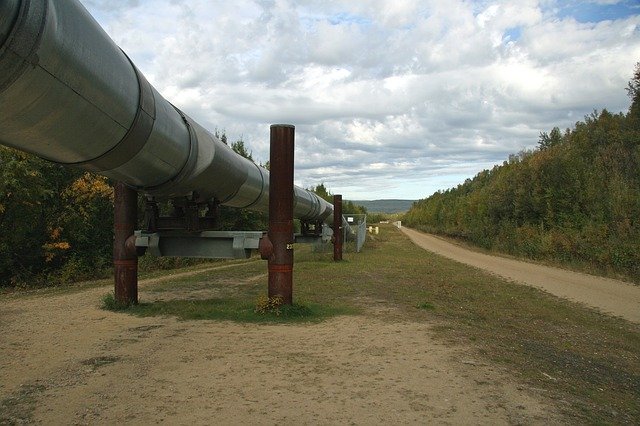- Blog
- What is carbon capture and storage?
What is carbon capture and storage?
The goal of carbon capture and storage is to reduce carbon emissions. For this to be successful, carbon dioxide must be effectively captured, transported, and stored. There are quite a few methods that can be used to ensure the success of this process, however carbon capture and storage is not without its challenges. In this article, we present an overview of carbon capture techniques, benefits, and current hurdles.
Carbon capture technologies
There are a number of ways to remove carbon from the atmosphere and reduce global warming. Some of these solutions exist naturally, and merely need to be more fully utilized. Other solutions are newer and more complicated, requiring optimization of high-tech processes. Following is a list of five common carbon capture technologies.
 Forests are full of plants which convert CO2 to hydrocarbons via photosynthesis. Both land and ocean forests offer relatively inexpensive methods to capture substantial amounts of carbon. This also provides the opportunity for the restoration of previously destroyed habitats.
Forests are full of plants which convert CO2 to hydrocarbons via photosynthesis. Both land and ocean forests offer relatively inexpensive methods to capture substantial amounts of carbon. This also provides the opportunity for the restoration of previously destroyed habitats.
Bio-energy with carbon capture and storage (BECCS) is a multi-step carbon capture technique. BECCS first uses biomass to produce fuel that powers industrial processes. It then relies on emissions capture and storage within long-lasting formations and products. The effectiveness of carbon capture depends on net biomass growth and carbon storage.
Farms contribute to carbon capture by storing carbon in soil. This in turn improves soil fertility and increases crop yield. Because agriculture accounts for an entire 50% of habitable land across the globe, improvements in farming technology could contribute significantly to carbon capture efforts.
 Carbon mineralisation occurs when CO2 gas reacts with minerals rich in magnesium or calcium and solidifies. While this does occur naturally over thousands of years, numerous methods are under development to artificially speed up the process. One such method is to inject CO2 into rocks so it can be stored as solid carbonate.
Carbon mineralisation occurs when CO2 gas reacts with minerals rich in magnesium or calcium and solidifies. While this does occur naturally over thousands of years, numerous methods are under development to artificially speed up the process. One such method is to inject CO2 into rocks so it can be stored as solid carbonate.
Direct air capture is a method of collecting carbon directly from ambient air, and then storing it underground or in long-lasting products (similar to BECCS). This process, however, requires a significant amount of energy and remains a costly method of carbon capture for large scale application.
Carbon capture and storage in action: Blue hydrogen production
 Carbon capture and storage is an extremely useful tool to use while other technologies are still under development. One example is the hydrogen industry. Eventually, the goal is to produce green hydrogen with zero carbon emissions. Currently, however, many green hydrogen strategies are still in research and development.
Carbon capture and storage is an extremely useful tool to use while other technologies are still under development. One example is the hydrogen industry. Eventually, the goal is to produce green hydrogen with zero carbon emissions. Currently, however, many green hydrogen strategies are still in research and development.
For hydrogen that is produced using fossil fuels, carbon capture and storage technologies can be employed to safely store carbon deep underground. This is an effective way to minimize carbon emissions while hydrogen technologies continue to develop.
Challenges of carbon capture and storage
Carbon capture is an effective short-term solution, especially when paired with other technologies. However, it may not be so effective in the long term. Challenges include the high cost of production, the requirements for transport, and risks associated with improper storage.
Cost
Carbon capture technology is expensive, and the cost estimates moving forward are highly uncertain. Some estimations say that carbon capture and storage costs will increase power production costs from 40-80%, depending on production method. Others say that the cost increases will only amount to 1-3%. The cost depends on specific applications and operation conditions. Until more industrial-scale carbon capture projects are underway, the exact cost may remain a bit of a guessing game.
Transport
Transporting CO2 at large scale will require long stretches of pipelines and the compression of large amounts of gas. It is also important to make sure transport is safe and effective, without leaks. This will require quite a bit of infrastructure development, energy expenditure, and adds to the overall cost of carbon capture.
Storage
There are many potential challenges associated with CO2 storage. First off, a lot of CO2 needs to be stored. Currently, storage is limited. It may be able to be stored in places currently used to store gas and oil, however those reservoirs would have to be completely depleted first. There is other options too, but there are concerns on ensuring storage is actually safe and reliable.
The topic of safety is one of the largest concerns. The storage of large amounts of CO2 can lead to pressure build-ups that are potentially dangerous. It can also lead to pollution and health risks if leaked out. It is extremely important to make sure CO2 storage is monitored and kept under control to minimize risks to humans and the environment.
Conclusion
The way in which the CO2 is utilized ultimately determines how sustainable the process of carbon capture really is. Burying CO2 is certainly useful in the short run, providing a useful buffer as other green technologies develop. However, it is very important that those other technologies do advance, using carbon capture and technology as a tool and not relying on it as the long-term solution.
